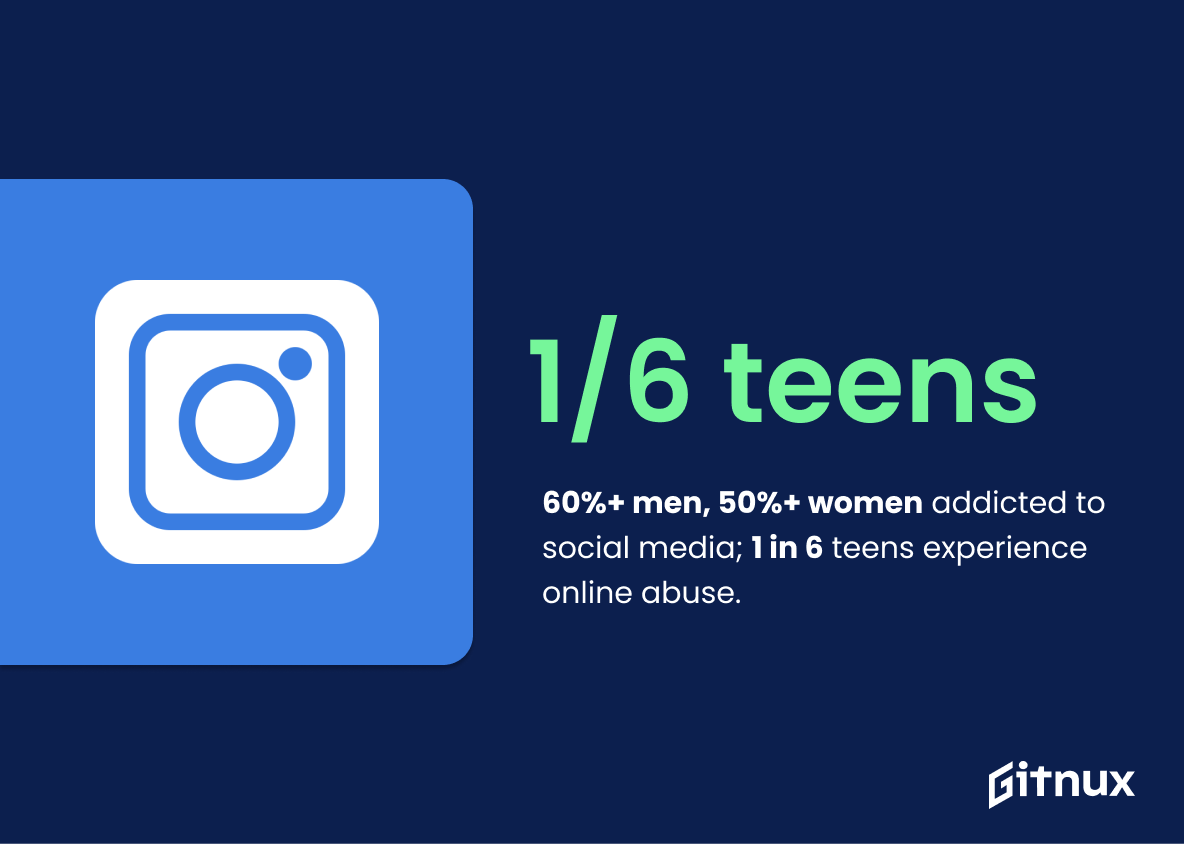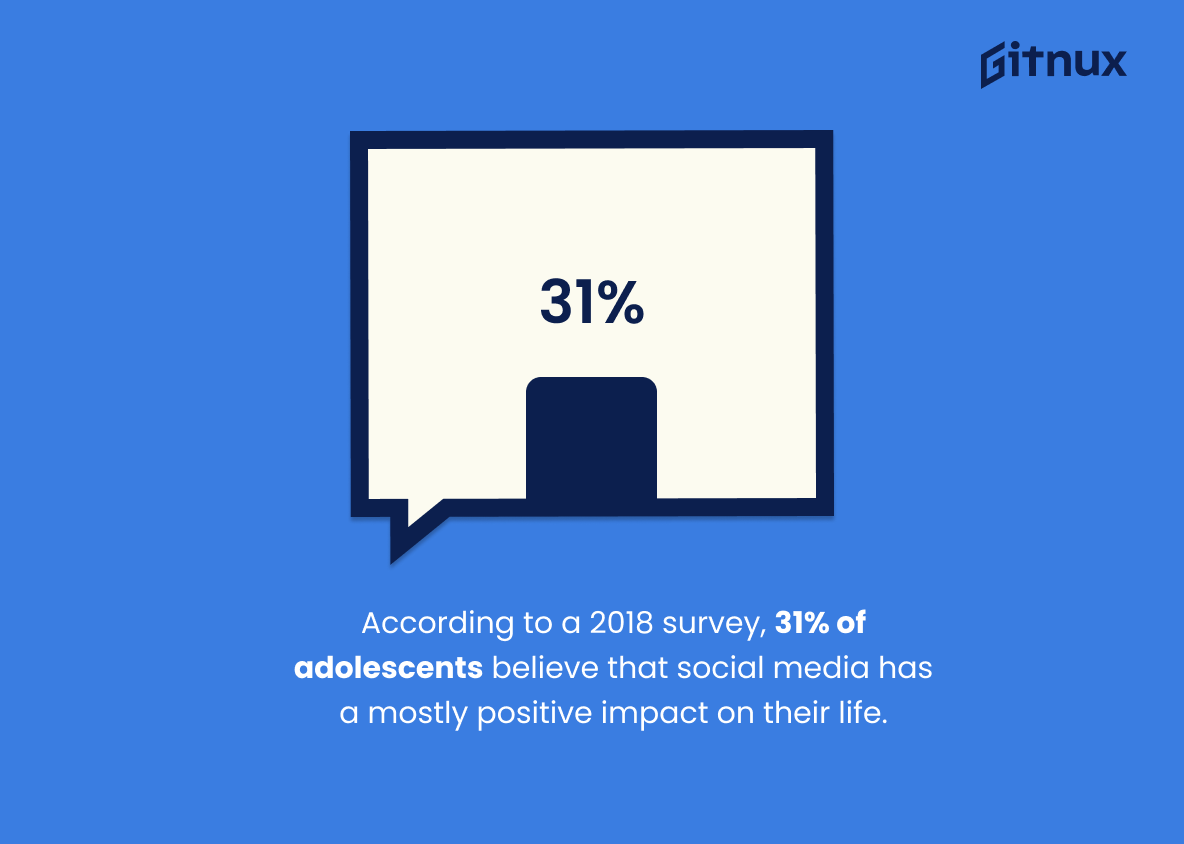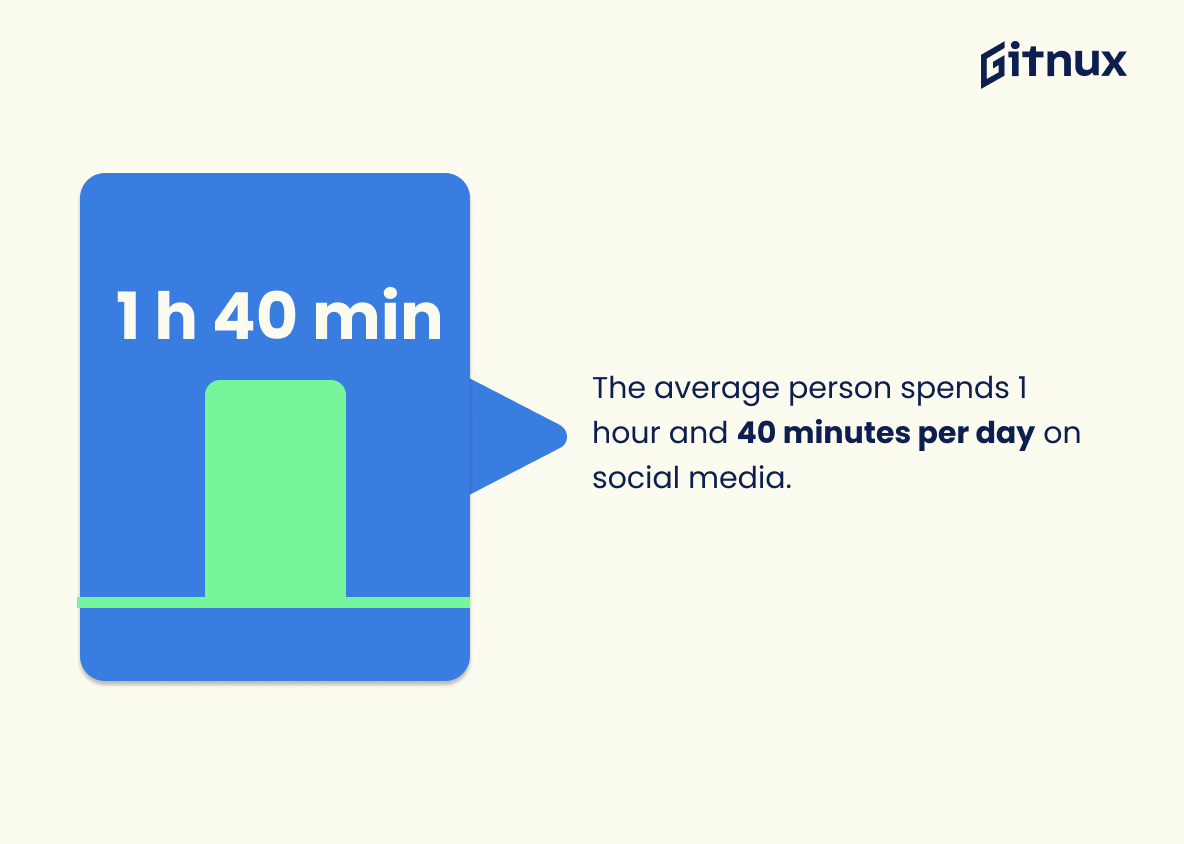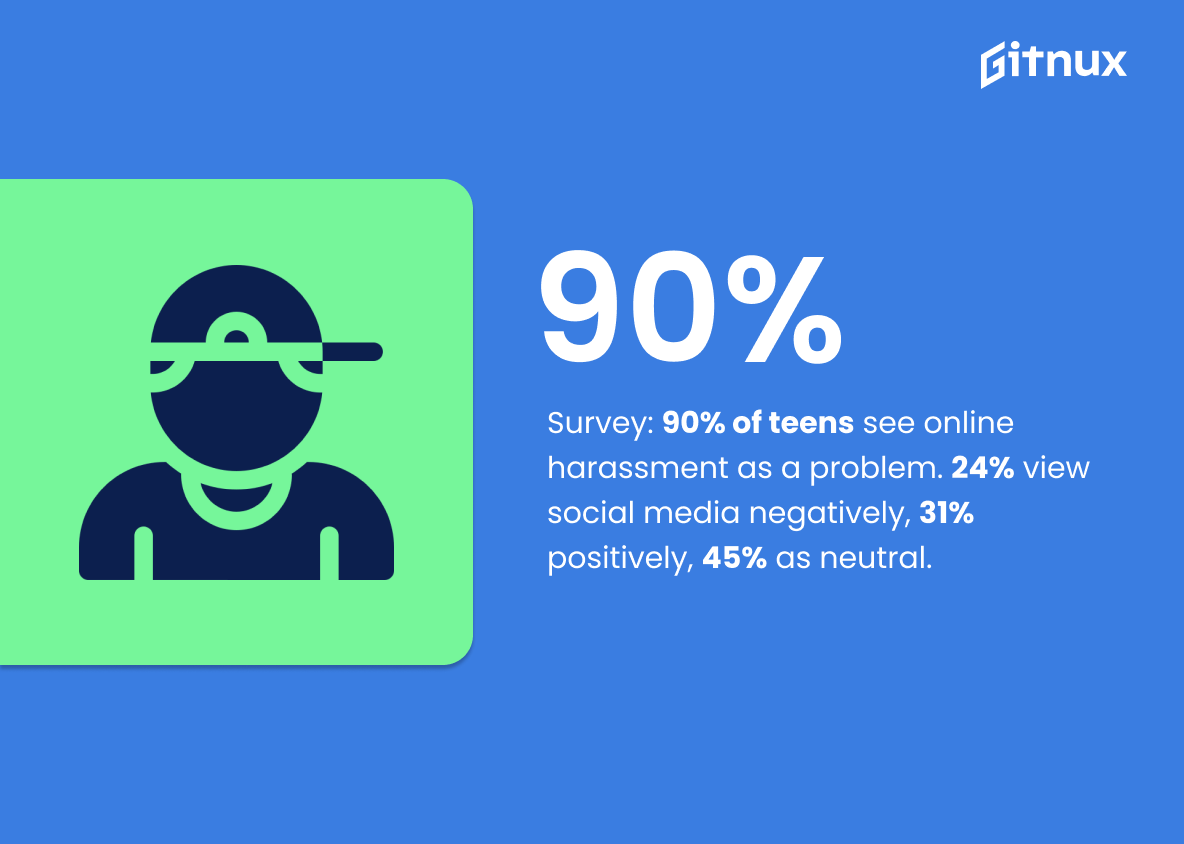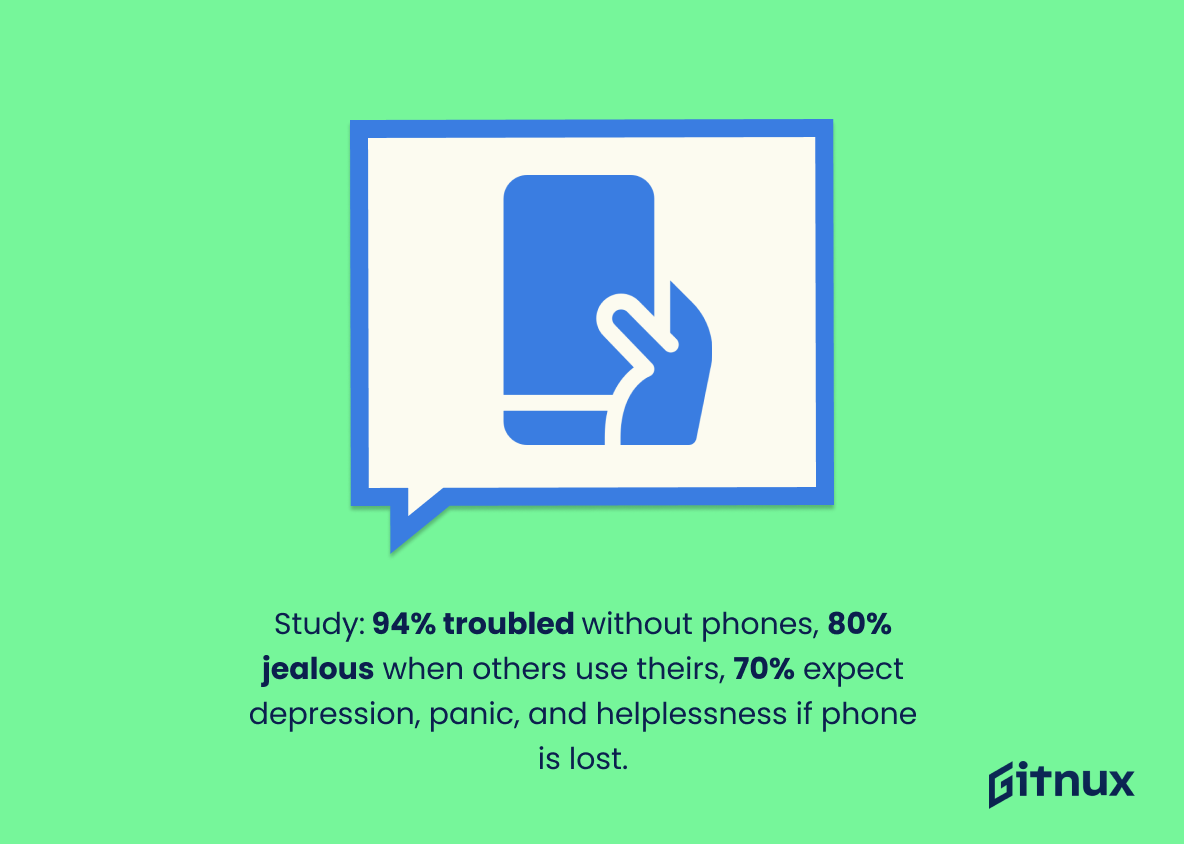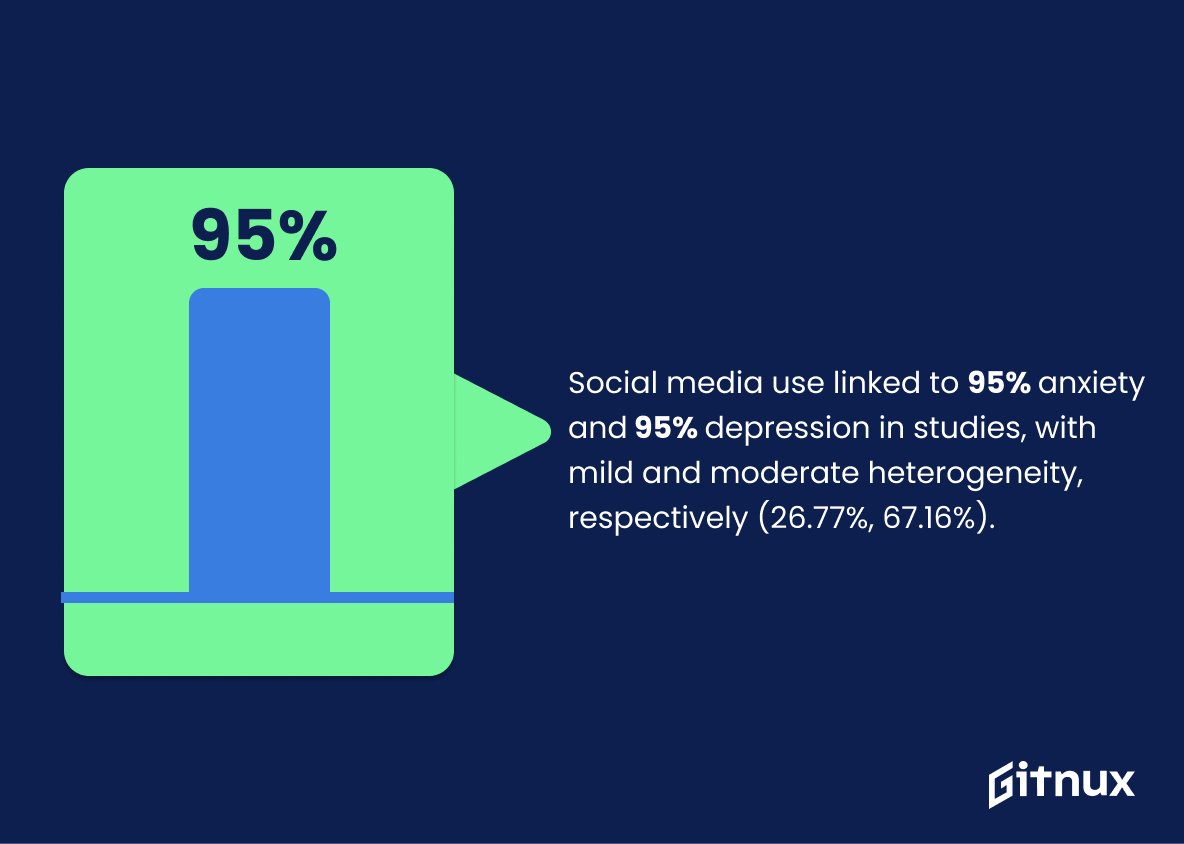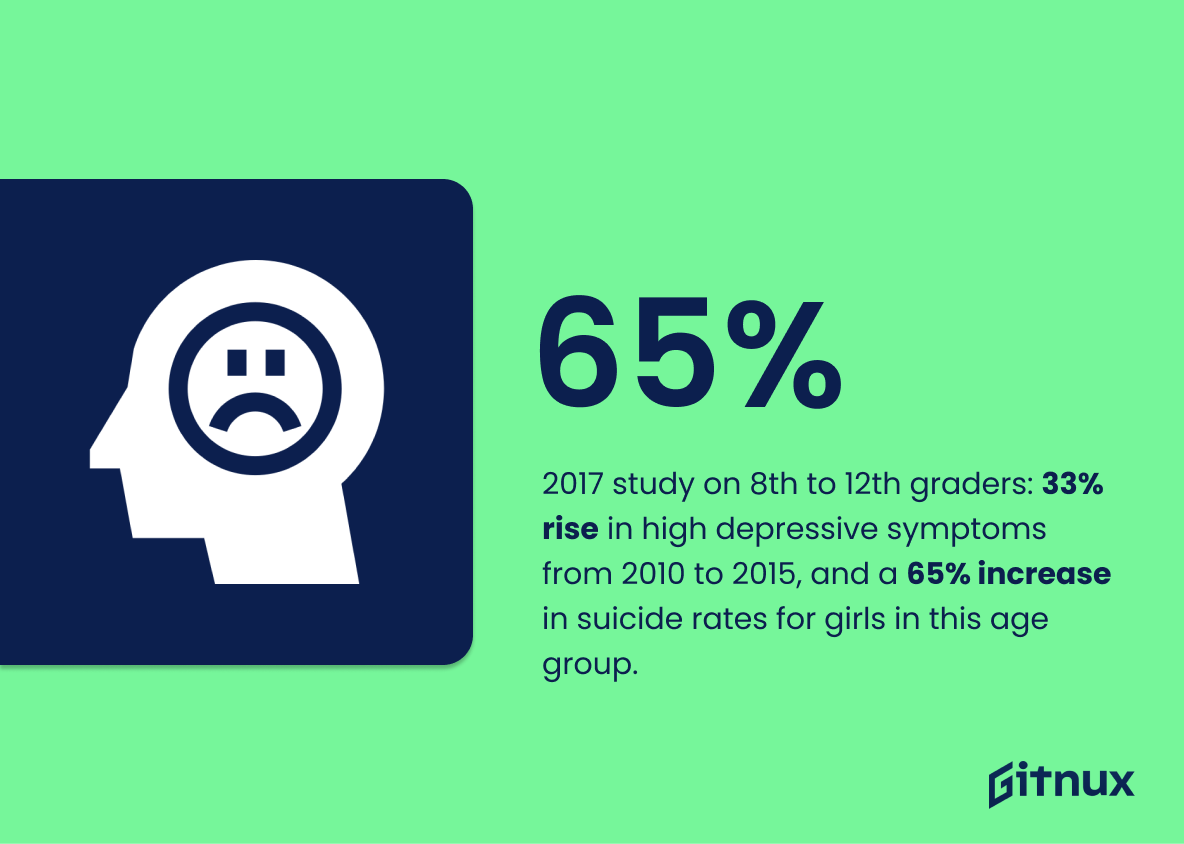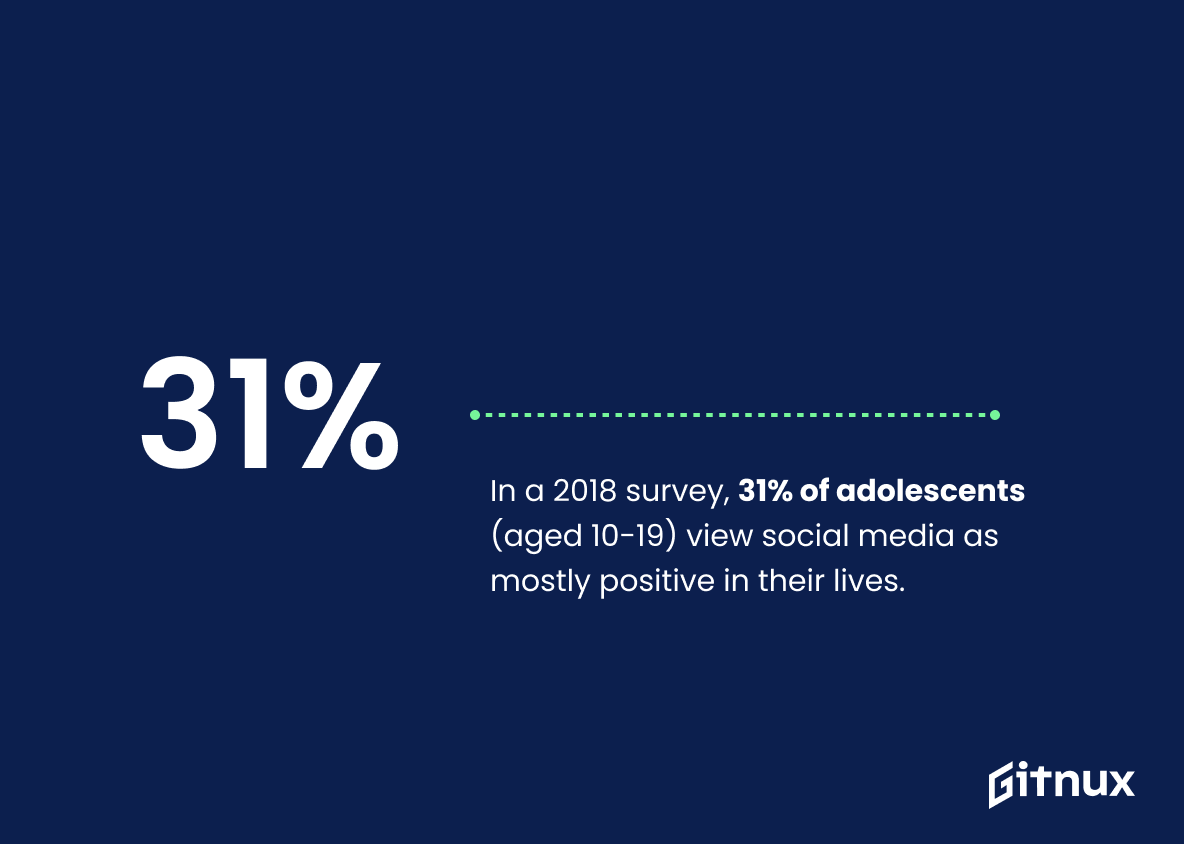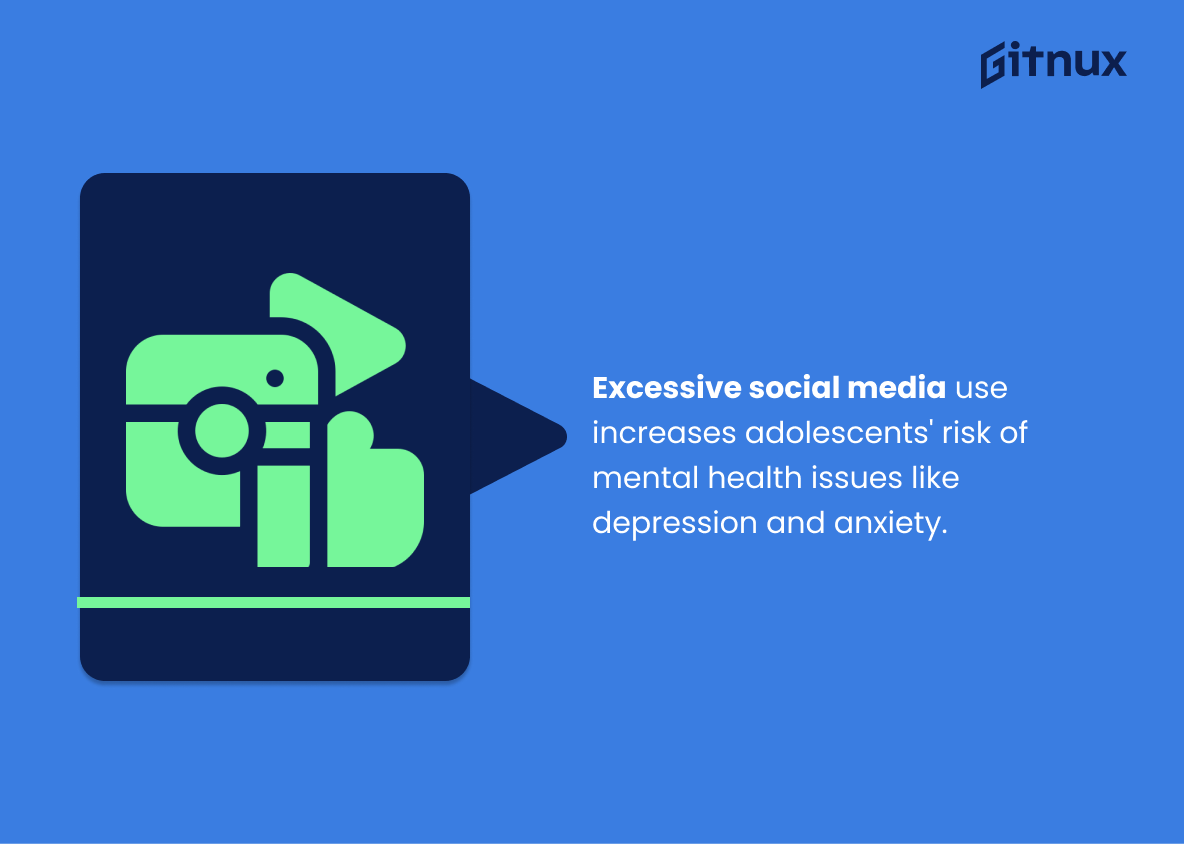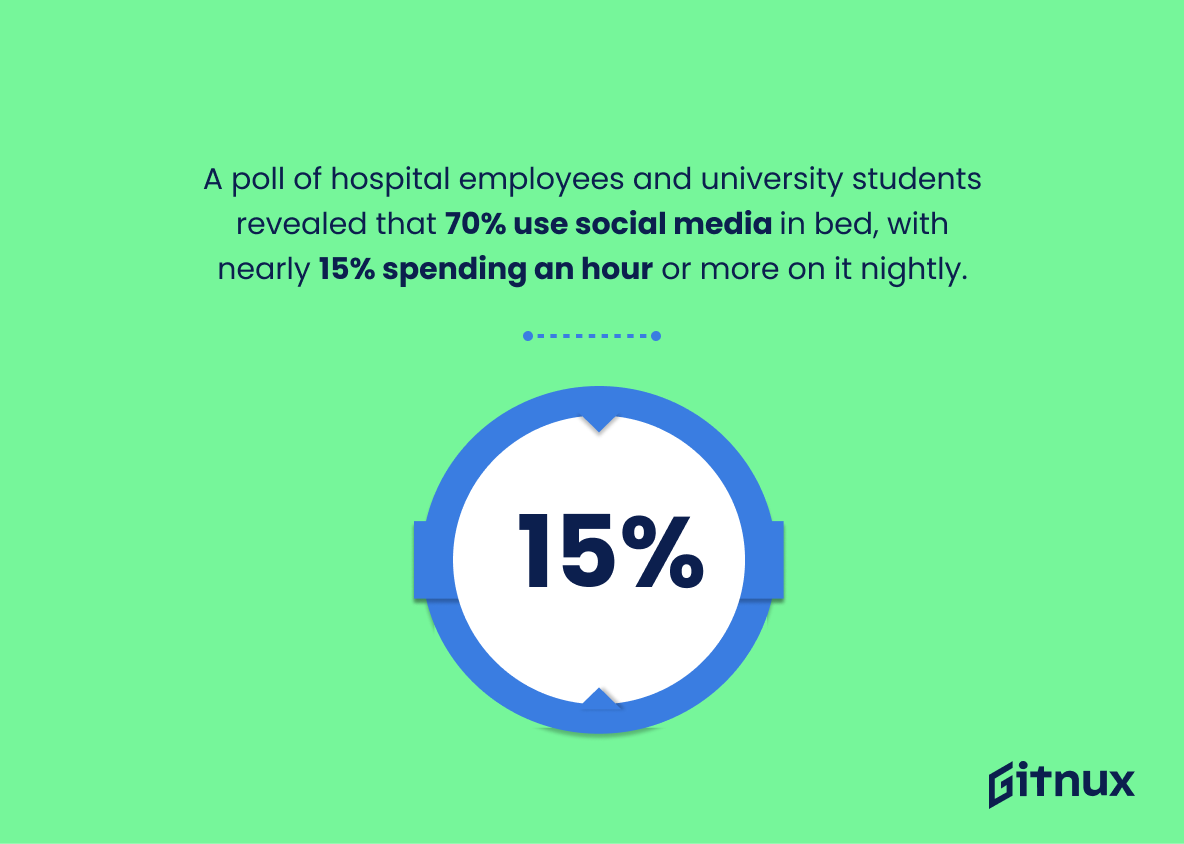Social media has become a mainstay in our lives, with over 3.6 billion users worldwide. It has become a powerful tool for connecting with others, sharing ideas, and staying informed. But with its ever-growing popularity, it has also become a source of stress and anxiety for many.
This blog post will explore the mental health statistics associated with social media use, and the potential risks and benefits of using it. We will look at how different types of social media usage can affect our mental health, and how we can use it in a healthy way.
Social Media Mental Health: The Most Important Statistics
1 in 6 teens has experienced forms of abusive behavior online.
According to a 2018 survey, 31% of adolescents believe that social media has a mostly positive impact on their life.
General Statistics On Social Media Mental Health
According to the Pew Research Center, 69% of adults and 81% of teenagers in the U.S. use social media. Approximately 86% of 18- to 29-year-olds use some type of social media platform. 80% of people aged 30-49 and 64% of people aged 50-64 are on social media.
The National Institute of Mental Health reports that the lifetime prevalence of any mental health illness among adolescents is 49.5%, and 22.2% of adolescents will suffer from severe mental impairment in their lifetimes.
More than 6 out of 10 men and 5 out of 10 women have a social media addiction.
The average person spends 1 hour and 40 minutes per day on social media.
Approximately 56% of Americans aged 18-29 experience anxiety when they are not able to access their social media accounts.
Mental health disorders affect 13% of the world’s population.
The mortality rate of individuals with mental health disorders is significantly higher than the general population, with an average life expectancy loss of 10.1 years.
1 in 6 teens has experienced forms of abusive behaviour online.
A survey found that 9 in 10 teens (90%) believe online harassment is a problem for people their age. 24% of teens reported believing social media has a generally negative effect. 31% say its effect is positive, and 45% say its impact is neither negative nor positive.
The rate of adolescents reporting symptoms of major depression in a given year increased by 52% from 2005 to 2017. From 2009 to 2017, it grew by 63% in adults ages 18 to 25. Experiencing psychological distress in a given month grew by 71% among young adults from 2008 to 2017. Even worse, the rate of suicidal thoughts in young adults increased by 47% during that same time.
A study found that 94% of participants reported feeling troubled when they didn’t have their phones. 80% were jealous when someone else used their phone, and 70% expected to feel depressed, panicked, and helpless if their phone went missing or they couldn’t find it.
A study found that 89% of undergraduate students experience phantom vibrations. This is the perception of vibrations from a mobile device that isn’t vibrating. People crave receiving notifications so much that they start imagining them.
Almost 40% of girls who spend more than five hours a day on social media show symptoms of depression. It found that 2 in 5 girls are on social media at least three hours a day compared to 1 in 5 of their male peers. While 10% of boys do not use social media at all, only 4% of girls said the same.
Social Media Mental Health and Covid 19 Statistics
People isolated due to the early quarantine regarding COVID-19 increasingly used more social media platforms. Contradictory claims regarding the effect of social media use on mental health need to be resolved.
According to 2020 data from Statista, 63% of U.S. parents reported that their teens used more social media than they did before the pandemic.
The COVID-19 pandemic has affected the mental health of 59% of people in the U.S.
The increase in the time spent using social media platforms was associated with anxiety symptoms in overall studies was 95%, and the heterogeneity between studies was mild (26.77%). Similarly, the increase in social media use time was also associated with depressive symptoms of 95% and the heterogeneity between studies was moderate (67.16%).
More time spent on social media during a typical day was significantly associated with poorer mental health only among the U.S. participants. The social media variables accounted for varying proportions of GHQ variance between the countries: between 7.8% in the UK and 17.6% in Australia.
As of 2022, there were over 4.6 billion social media users globally. The use of social media substantially increased during the pandemic as people had to find ways to fulfil their social needs when physical distancing was imposed.
A study from the United States analysed 60 million tweets from the first wave of the pandemic (March–May 2020) and compared these with 40 million tweets from the same period in 2019. They used machine learning classifiers to identify the social media language indicative of mental health problems (anxiety, depression, stress, and suicidal ideation), and found that overall, mental health symptomatic expressions increased by 14% during the COVID-19 period.
4,213,005 tweets related to mental health and COVID-19 were extracted from 2,316,817 users. Of these tweets, 51.3% were related to depression, whereas 45.66%, 5.35%, and 3.56% were related to anxiety, insomnia, and addiction, respectively.
Social Media Mental Health Statistics by Age
Since the release of smartphones, mental health concerns have increased in children and young adults. The rate of adolescents reporting symptoms of major depression in a given year increased by 52% from 2005 to 2017. From 2009 to 2017, it grew by 63% in adults ages 18 to 25.
Experiencing psychological distress in a given month grew by 71% in young adults from 2008 to 2017. Even worse, the rate of suicidal thoughts in young adults increased by 47% during that same time.
According to the American Academy of Child & Adolescent Psychiatry, 90% of U.S. teens ages 13–17 use or have used social media. By 2015, 92% of teens and young adults owned a smartphone. But, as smartphone use increased, so did feelings of depression.
A 2017 study of 8th to 12th graders found that high levels of depressive symptoms increased by 33% between 2010 and 2015. The suicide rate for girls in this age group increased by 65%.
Child suicide rates increased by up to 150%, and self-harm by girls age of 10-14 nearly tripled. These patterns point to social media.
Eighth-graders who spend over 10 hours on social media per week are 56% more likely to report being unhappy than those who spend less time on social media.
Spending more than 3 hours on social media per day puts adolescents at a higher risk for mental health problems.
13% of kids ages 12-17 report depression and 32% report anxiety. 25% of 18 to 25-year-olds report mental illness. These age groups report high usage of social media.
59% of US teens experienced cyberbullying or online harassment. 90% say they think this harassment is a problem that affects other people their age. 63% say that it’s a major problem.
According to the Centers for Disease Control and Prevention (CDC)Trusted Source, suicide attempts among U.S. adolescents increased by 31% from 2019 to 2020, and emergency department visits for suspected suicide attempts in 2021 were 51% higher among girls ages 12–17 than during the same period in 2019.
An ExpressVPN survey of 1,500 Americans found that 86% of those ages 16 to 24 reported that social media directly negatively impacts their happiness. 85% reported negative effects on self-esteem.
According to a 2022 Healthline survey of 1,042 U.S. citizens, 29% of respondents of all ages felt they needed to take a social media break of a few days to feel a benefit to their mental health. Interestingly, this number jumped to 46% among 15- to 24-year-olds.
According to a 2018 survey, 31% of adolescents (aged 10-19) believe that social media has a mostly positive impact on their life.
Social Media Mental Health and Sleep Statistics
Around 95% of adolescents (10-19 years-olds) have access to a smartphone and, not surprisingly, around 45% report being online “almost constantly”. Several potential links between using social media developing mental health issues in young people and social media affecting sleep patterns. Adolescents who spend too much time on social media have more trouble falling asleep, and increased insomnia and depression.
Excessive time on social media puts adolescents at high risk for mental health problems, such as depression and anxiety.
Approximately 21% of adults say that they wake up to check their phones during the night, leaving them at an even higher risk of losing sleep and developing a sleep disorder like insomnia.
A poll of hospital employees and university students found that a staggering 70% of people report using social media after getting into bed with almost 15% spending an hour or more doing so each night.
Conclusion
Social media can have a huge impact on mental health, both positive and negative. The statistics show that while it can be a great way to stay connected with friends and family, it can also lead to feelings of isolation and depression. It is important to be mindful of how much time you spend on social media, and to remember to take breaks and focus on activities that can help improve your mental health. Taking care of your mental health is essential for overall well-being, so be sure to set the necessary boundaries to prevent negative effects.
References:
BMC: “Social media use and mental health during the COVID-19 pandemic in young adults: a meta-analysis of 14 cross-sectional studies”, cited in [Current Month] 2023 (Source)
Frontiers: “Social Media Use and Its Associations With Mental Health 9 Months After the COVID-19 Outbreak: A Cross-National Study”, cited in [Current Month] 2023 (Source)
PMC: “Opportunities and challenges of using social media big data to assess mental health consequences of the COVID-19 crisis and future major events”, cited in [Current Month] 2023 (Source)
JMIR: “Publications Tracking the Impact of COVID-19 and Lockdown Policies on Public Mental Health Using Social Media: Infoveillance Study”, cited in [Current Month] 2023 (Source)
CrossRiverTherapy: “49 Social Media and Mental Health Statistics (2022)”, cited in [Current Month] 2023 (Source)
Etactics: “40+ Frightening Social Media and Mental Health Statistics”, cited in [Current Month] 2023 (Source)
JEC: “Is Instagram Causing Poorer Mental Health Among Teen Girls?”, cited in [Current Month] 2023 (Source)
The Guardian: “Depression in girls linked to higher use of social media”, cited in [Current Month] 2023 (Source)
NCHR: “Social Media and Adolescents’ and Young Adults’ Mental Health”, cited in [Current Month] 2023 (Source)
HealthLine: “Social Media and Youth Mental Health: How to Find Balance After Pandemic Spikes in Use”, cited in [Current Month] 2023 (Source)
SleepFoundation: “Sleep and Social Media”, cited in [Current Month] 2023 (Source)
McLean Hospital: “The Social Dilemma: Social Media and Your Mental Health”, cited in [Current Month] 2023 (Source)
ZipDo, cited June 2023: Social Media Mental Health Statistics
